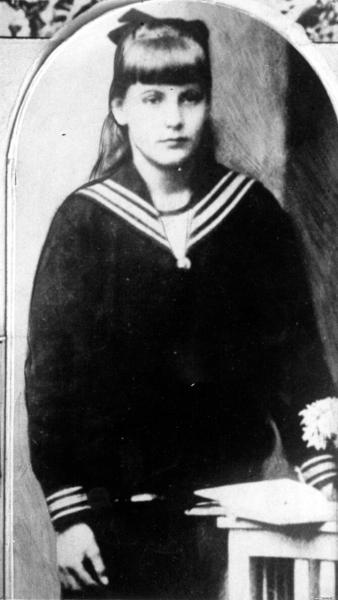 Born into relative poverty in 1905, few would have believed Greta Gustafsson's story of shopgirl to international icon. She would often be described as introverted and aloof, which even in childhood was apparant, as she preferred to play alone. It was also quite early in her childhood that she developed a passion for theatre, often sneaking into her local theatre house for free viewings. When she was fourteen she began to work as barber shop laver girl, as well as having to look after her father who had been struck down with Spanish influenza, a year later he was dead. It was to be the first of several tragic occurances that were to occur in her early life.
Born into relative poverty in 1905, few would have believed Greta Gustafsson's story of shopgirl to international icon. She would often be described as introverted and aloof, which even in childhood was apparant, as she preferred to play alone. It was also quite early in her childhood that she developed a passion for theatre, often sneaking into her local theatre house for free viewings. When she was fourteen she began to work as barber shop laver girl, as well as having to look after her father who had been struck down with Spanish influenza, a year later he was dead. It was to be the first of several tragic occurances that were to occur in her early life.In 1921, she started a new job as an errands girl for Stockholm's famous PUB department store. It was here that she was to be introduced into the world of cinema, by appearing in a couple of short commercials for the department store as a model of clothes and hats (seen in the video below). She caught the attention of Swedish film director Erik Arthur Petschler, who gave her a part in his film Peter the Tramp (1922). It was a small part, but it was enough to secure her a scholarship to the Royal Dramatics Theatre School in Stockholm. She was then cast by leading Swedish director Mauritz Stiller in his epic The Saga of Gosta Berling (1924). The two quickly formed a close bond, and Stiller saw in Garbo a potential star. He began her mentor, and taught her film acting and acted as her manager in these formative years.
Her next film was to take her to Germany and work with another great of early European cinema, G.W. Pabst in his 1925 film The Joyless Street. It was during this time that Hollywood mogul, Louis B. Mayer had come to Europe in order to acquire the new talent. Like the majority of her life, there are contradicting stories as to how exactly Louis B. Mayer came to acquire her talent. One that when he signed Mauritz Stiller up to MGM, Stiller made Mayer also take Garbo with him to Hollywood. The other story is that Mayer had already seen The Saga of Gosta Berling, whilst on tour of Europe, and had been impressed by the young actress, and was desperate to sign her up, through the premise of signing Stiller. Either way both were signed to MGM contracts, and left Europe in mid-1925.
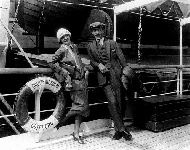
After spending a few weeks in New York (right), they were soon welcomed into Hollywood by the Scandanavian community there (below). The first six months of Garbo's stay were tough, studio head Irvin Thalberg wasn't impressed by her appearance, she was soon moulded and whipped into the shape of a Hollywood glamourpuss. She was put on a diet, had her teeth corrected and her hair softened from her permed style. She then did a screen test with her future long term collaborator, cameraman William Daniels, but it wasn't a success. She however got a break when legendary Hollywood actress Lillian Gish suggested Sartov to photograph her screen-test, and with Stiller's direction, he second screen-test was a success.
Her first Hollywood film was to be The Torrent under the the direction of Monte Bell and opposite leading man Ricardo Cortez. Garbo was disappointed not to be working under the direction of Stiller, but reluctantly accepted the role for the sake of her career. It was during this period, that Mayer, suprisingly, tried to extend Garbo's contract, but she held out and told Mayer to wait until after the release of her first film.
Her first six months were made even harder by her failure to grasp the English language, which forced her to remain in her shell and become somewhat reclusive. But just before production on her film started the studio hired her a personal translator, Sven Hugo-Borg.
Her first six months were made even harder by her failure to grasp the English language, which forced her to remain in her shell and become somewhat reclusive. But just before production on her film started the studio hired her a personal translator, Sven Hugo-Borg.
Despite the photo above, Cortez didn't get on with Garbo. He felt himself, already an established star, shouldn't be starring opposite a European novice. He rarely gave Garbo notice off camera, ironically Garbo herself famously became this way on later sets of her productions. Director Monte Bell didn't make things any easier as she was given little guidance on how to play her scenes, something she was unaccustomed to. However, the film was a box office success, and Garbo received plaudits for her performance. The Torrent also marked the first and last time Greta Garbo was ever to attend a premier of one of her films.
Thalberg who had just six months previous, labelled Garbo "unusable", was keen to cast her again in another "vamp" role, and another Ibáñez piece, The Temptress. Garbo, who didn't want to play another vamp, was even given top billing and her mentor Stiller assgined to direct. This period however was to prove the worst of Garbo's life so far. She was arrested in early 1926 for speeding and was forced to pay a $10 fine. Mayer meanwhile was getting increasingly desperate to secure Greta's long term future. It was also during this time, before production on The Temptress started, that she posed for these questionable publicity shoots (below).

Towards the end of the year, Garbo's life was to take another turn. Feeling disillusioned with life in Hollywood, she was reluctant to work for MGM again. The studio then sent her a sternly worded letter to remind her of her commitments to her contract and demanded her to return to work on her next film Flesh and The Devil. Her leading man this time, after the death of Valentino and the success of The Big Parade, was the biggest star in Hollywood, John Gilbert. The two soon fell in love, as was evident for all to see on the set of the film, even before production had finished, the two had begun living with each other. It was even rumoured that Gilbert proposed to Garbo during this time, and whilst at first she accepted, she soon backed out. Garbo and Gilbert would soon overtake Douglas Fairbanks and Mary Pickford as Hollywood's golden couple. Flesh and The Devil marked the first of her 8 films with director Clarence Brown, and William Daniels her cinematographer who probably best captured Garbo's erotic screen persona throughout the rest of her career.
The success of Flesh and the Devil was such, that Garbo was now the biggest female star in Hollywood. Audiences were enchancted by the intimacy of the love affair between Garbo and Gilbert off screen as well as on screen. Whilst with Gilbert, Garbo was at her most sociable, attending parties as well as playing tennis matches against celebrity couples.
Outside of their relationship Garbo was becoming more and more reluctant to play by the studio's rules, and was unwilling to appear in their next project as another vamp. MGM gave her an ultimatum, to turn up to the studio within 48 hours, or her contract would be terminated. She called their bluff. She demanded a say in her roles, as well as a ten fold pay increase. MGM tried to play it out in the press as Garbo being greedy, but Mayer was getting increasingly hesitant at Garbo's reluctance to sign. He decided to give her a salary increase, just shy of her demands, as well as further salary increases for each further year of her contract. Garbo had won, she was one of only a few stars ever to have held Louis B. Mayer to ransom. And was the only one who came out on top.
 MGM wanted to capitalise on the Gilbert/Garbo romance as much as possible and offered them a vehicle based on Tolstoy's Anna Karenina. It was to be called "Love", so that it could be marketed as "Garbo and Gilbert are in Love" (left). It was another hit, and Garbo's star continued to rise, she would continue to have commercial success throughout the late 20's, with The Divine Woman, A Woman of Affairs and another Gilbert picture Wild Orchids. It was in mid 1928 that Garbo's mentor Mauritz Stiller died, back in Sweden. She was broken up about his death. It is unclear and unlikely as to whether the two had been intimate, with Stiller being a known homosexual, but some suggest that there may have been a non-platonic relationship. It was also around this time that another debated part of Garbo's history comes up. It is rumoured that Gilbert, after finally getting Garbo to accept his proposal, a double wedding was arranged (alongside King Vidor and Eleanor Boardmann). It is speculated that Garbo failed to appear at the ceremony, and Gilbert was humiliated. He was enraged further when movie mogul Louis B. Mayer apparantly made a snide remark about Garbo at the time, he reportedly attacked Mayer. It is quite unclear as to the accuracy of this story. There is however some validity as to the violent arguments the two had thoughout their relationship, with Garbo's reluctance to go to social gatherings as their relationship wore on, and Gilbert's indulgence in drink, although he was never physically abusive.
MGM wanted to capitalise on the Gilbert/Garbo romance as much as possible and offered them a vehicle based on Tolstoy's Anna Karenina. It was to be called "Love", so that it could be marketed as "Garbo and Gilbert are in Love" (left). It was another hit, and Garbo's star continued to rise, she would continue to have commercial success throughout the late 20's, with The Divine Woman, A Woman of Affairs and another Gilbert picture Wild Orchids. It was in mid 1928 that Garbo's mentor Mauritz Stiller died, back in Sweden. She was broken up about his death. It is unclear and unlikely as to whether the two had been intimate, with Stiller being a known homosexual, but some suggest that there may have been a non-platonic relationship. It was also around this time that another debated part of Garbo's history comes up. It is rumoured that Gilbert, after finally getting Garbo to accept his proposal, a double wedding was arranged (alongside King Vidor and Eleanor Boardmann). It is speculated that Garbo failed to appear at the ceremony, and Gilbert was humiliated. He was enraged further when movie mogul Louis B. Mayer apparantly made a snide remark about Garbo at the time, he reportedly attacked Mayer. It is quite unclear as to the accuracy of this story. There is however some validity as to the violent arguments the two had thoughout their relationship, with Garbo's reluctance to go to social gatherings as their relationship wore on, and Gilbert's indulgence in drink, although he was never physically abusive.The end of the decade also heralded a new era for cinema, The Jazz Singer (1927) was the first sound feature film. Studios moved quickly to capitalise on this new market, and the acting art form had to change. Without sound actors were forced to exaggerate expressions, but with sound more subtlety was required. Major silent movie stars who were making the transition were struggling. MGM were reluctant to let Garbo, now their biggest star, make the transition due to her strong Swedish accent. She was one of the very last to make the transition. Meanwhile she continue to make silent films, watching her fellow stars fall by the wayside.
None worried her more, than the demise of her former lover John Gilbert. Some attribute this to the earlier anecdote when Gilbert had attacked Mayer. Regardless, Gilbert had always clashed with Mayer, and some insist Mayer was instrumental in the star's demise, espescially with Mayer's reluctance at giving into Gilbert $250,000 a picture deal. Mayer would repeatedly give Gilbert poor scripts and poor directors. However, GIlbert's first talky recieved generally positive reviews, though only a small part. But his next starring role, was where the wheels started to come off. In His Glorious Night he is seen over ardently saying "I love you" to his leading lady in a slightly high pitched tone (some attribute this to Mayer). The audience laughed. This was later parodied in the 1952 musical Singin' in the Rain. He did however managed to fulfill his picture deal, but was never able to recapture the height of his earlier fame. He died of a heart attack in 1936, aged just 38, probably aggravated by his alcoholism.
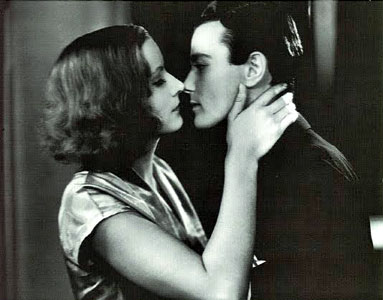
Garbo made her last silent The Kiss (1929) opposite Lew Ayres (above), alongside brushing up on her English and accent. She was provided a script of a Eugene O'Neill play, with the ideal role of a Swedish immigrant arriving in New York, as her first talking feature. The film was Anna Christie (1930), and it was promoted as "Garbo Talks!". The moment of truth for Garbo had arrived, her first words arrive 15 minutes into the movie. "Gif me a visky, ginger ale on the side, and don' be stingy, baby."
Her deep, exotic tone, won favour with the American audience, and she had survived. The only other major silent star to have survived the transistion was Joan Crawford. The two were to soon be cast together in MGM's most ambitious project to date. Grand Hotel (1932) was designed to unite the biggest major stars from MGM, in Hollywood's first ensemble cast. Garbo was given top billing alongside John and Lionel Barrymore, Wallace Beery and Joan Crawford. Hollywood gossip journalists enhanced Garbo reputation of aloofness on set, Garbo never rehearsed in front of an audience, she insisted that she only ever be filmed on a close set, with only the director and her cameraman, as well as the supporting players. One story to capture the world's imagination of Garbo the person was that despite them not having any scenes together, Joan Crawford often tried to talk to Greta Garbo. Crawford would often say "Hello, Miss Garbo" whenever the two would pass each other in the hall. Garbo never responded, so Crawford gave up and stopped saying anything. This led to Garbo stopping Crawford as she walked silently past her, and asking, "Aren't you going to say something to me?". Most of these stories could merely be heresay, Crawford would later in life comment on meeting Garbo, "Oh, you'd be breathless."
Nevertheless the film was a huge success both critically and commercially, and went against conventional Hollywood wisdom of putting no more than two major stars in a picture together. The film itself enhanced Garbo's on reputation of aloffness with her repeating the line "I want to be alone." This was line that would live with her for the rest of her life. Although the line had already been used in her previous projects, and would continue to be used until her retirement 10 years later.
Nevertheless the film was a huge success both critically and commercially, and went against conventional Hollywood wisdom of putting no more than two major stars in a picture together. The film itself enhanced Garbo's on reputation of aloffness with her repeating the line "I want to be alone." This was line that would live with her for the rest of her life. Although the line had already been used in her previous projects, and would continue to be used until her retirement 10 years later.
As "Garbo-mania" reached it's zenith in the early 1930's, MGM wanted to secure her on a longer term contract. Garbo held more cards this time, and as a sign of her resolve, she toured Europe with friend Leopold Stokowski. It was heavily speculated that the two were romantically involved, although Garbo forever maintained they were simply friends. She even went as far to give a press conference (below) on the supposed affair, something that was unheard of for Garbo, who hadn't even given a press interview for 5 years.
The public and indeed MGM were more worried about the imminent retirement of the 26 year old star. MGM buckled and she was able to secure her more control over film choices and co-stars. As well as making her the highest paid actress in Hollywood at $250,000 per picture on top of her weekly $7,000 salary. Her new film was to be one of her dream roles, and one she would be forever immortalised by. For Queen Christina (1933), she had originally chosen a young Laurence Olivier as her leading man, but as Olivier himself recounts, there was just no chemistry between the two on set. Olivier himself would return back to England on the West End stage until the end of the decade. Without a leading man, Garbo insisted that the studio hire her old beau John Gilbert for the part. Initially apprehensive at hiring the faded star, the studio eventually succumbed to Garbo's demand.
 The adrogynous role of the Swedish Queen was perfect for Garbo, and despite the two no longer being together romantically in real life, Garbo and Gilbert had lost none of their on-screen magic. Directed by Rouben Mamoulian, the final scene of Queen Christina is celebrated as Garbo's and one of MGM's most iconic. Christina stands as a silent figurehead at the bow of the ship bound for Spain. With the wind blowing through her hair, the camera moves, slowly for 40 seconds, in to a tight close-up on her face (right).
The adrogynous role of the Swedish Queen was perfect for Garbo, and despite the two no longer being together romantically in real life, Garbo and Gilbert had lost none of their on-screen magic. Directed by Rouben Mamoulian, the final scene of Queen Christina is celebrated as Garbo's and one of MGM's most iconic. Christina stands as a silent figurehead at the bow of the ship bound for Spain. With the wind blowing through her hair, the camera moves, slowly for 40 seconds, in to a tight close-up on her face (right).
Queen Christina, also marked one of her more overtly lesbian themed roles. Although, not at all explicit, Garbo's character is implied at times to have more than just a platonic female relationship with one of her subjects (Elizabeth Young, above). In many films Garbo is very affectionate to other women, certainly in a much more noticeable way than any of her contemporaries (even compared to Dietrich), and it probably wasn't until the 1990's that Hollywood began making explicit lesbian movies. Garbo went even further in her next film The Painted Veil (1934) (below) as she seemed to passionatly kiss her character's sister, only managing to pass the newly enforced Hayes code, as being sisterly affection. It is partly due to this penchant for kissing women on screen that she both became and remained such an icon over the years for the lesbian and gay communities. Her own sexual preference was just as ambiguous, which only served to fuel her status as a gay icon.
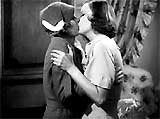
As part of her MGM deal, she was now allowed to only make one picture per year. In The Painted Veil, she played a frustrated scientist's wife in Hong Kong, where she embarks on an affair with a British diplomat. The film wasn't a commercial success in Hollywood, but managed to make profit through the European market. Although Garbo still had broad appeal in the American mainstream market, her films were becoming more marketable and performing better in Europe.

_01.jpg)
Camille saw Garbo opposite a young Robert Taylor as her young lover Armand Duval, who she sacrifices the Baron De Varville's finances for (impressively played by Henry Daniell). It is arguably Garbo's finest film, her performance is exquisite, as are the performances of Taylor and Daniell. It was another commerical and critical success too, with Garbo earning her third Academy Award nomination.
Conquest (1937) was another ambitious MGM production, and one of their most expensive to date. Garbo kept her $500,000 salary. It told the story of Polish Countess Marie Walewska (Greta Garbo), who was Napoleon Bonarte's (Charles Boyer) mistress, who tried to influence Napoleon's actions to protect her homeland. Despite generally positive reviews, commercially the film was a disaster. It marked Garbo's second financial loss of her movie career, and MGM's biggest ever loss for a movie. Charles Boyer was one of Garbo's few leading men, who she maintained contact with after her Hollywood career.
The commercial failure of Conquest, led to Garbo - as well Crawford, Davis, Dietrich and Katherine Hepburn - being called "box office poison" in an open letter published by the National Theater Distributors of America. Ironically, all the above stars managed to survive the publication, except Garbo, who was to quit Hollywood within 4 years. Garbo still managed to make one more hit before then though, in Ernst Lubitsch's comedy Ninotchka (1939), opposite Melvyn Douglas. Marketed as "Garbo Laughs!", it marked Garbo's first comedic role, and she was able to show satirise her own somber image with the character, as well as showing her lighter side. The film also marked the first critical success of then unknown script writer Billy Wilder. Garbo was nominated for her fourth and final Best Actress Oscar, and the film did well commercially.
But events in Europe and the impending war there, meant that Garbo's profitability as movie star, would be hit in the European markets, where her films made half their money. Her last film attempted to capitalise on the success of Ninotchka, reuniting Garbo and Douglas. The Two-Faced Woman (1941), see's woman play two twins, with one married to Melvyn Douglas, and the other Melvyn Douglas believing he is married to. It saw Garbo in a variety of never before seen poses. She portrayed a ski-instructor, was seen in a swimsuit and even danced the Rumba. It was branded as immoral by the National Legion of Decency, the critics were just as harsh, with Time magazine saying of Garbo "It's almost as shocking as seeing your mother drunk." Garbo took the reviews to heart, and she later referred to the film as her "grave". Despite the negativity the film still made a sufficient profit, but Garbo was never to return to movies again, at the age of just 36.
The offers never stopped coming for Garbo to return to movies, but she either didn't like the part, or the project didn't come to fruition. She came close several times, in 1949 she did the below screentest's for an adaptation of Balzac's La Duchesse De Langeais:
Visconti reportedly offered Garbo $1,000,000 for a small role in his 1969 project Rememberance of Things Past. It was to feature an all star cast including Laurence Olivier, Charlotte Rampling and Alain Delon, but it never came to fruition as the film's budget spiralled out of control.
 She received an Honoury Academy Award in 1954 for "her unforgettable screen performances", she typically didn't attend the ceremony. Her legacy on screen has seen her named as AFI's 5th Greatest Female Star of All Time. Although maybe technically not as good an actress as some of her peers, such as Hepburn, Davis and later Vivien Leigh, Garbo had something that no other movie star had, an allure and presence that no-one has ever matched. Her androgynous look and nature made her appeal to women and men both physically and with her head-strong personality. She was unconventianal, she managed to be a major star, without playing by the studio system rules. Rarely giving interviews, rarely going to social events and rarely attending her own premieres.
She received an Honoury Academy Award in 1954 for "her unforgettable screen performances", she typically didn't attend the ceremony. Her legacy on screen has seen her named as AFI's 5th Greatest Female Star of All Time. Although maybe technically not as good an actress as some of her peers, such as Hepburn, Davis and later Vivien Leigh, Garbo had something that no other movie star had, an allure and presence that no-one has ever matched. Her androgynous look and nature made her appeal to women and men both physically and with her head-strong personality. She was unconventianal, she managed to be a major star, without playing by the studio system rules. Rarely giving interviews, rarely going to social events and rarely attending her own premieres.
When it was speculated that she was to attend the premiere of Grand Hotel (1932), guests waited in anticipation, only for Wallace Beery to come out in drag, impersonating the Swedish Sphynx. The gag didn't go down well.
What of Garbo the person though, what did she do with the rest of her life? Scared of publicity, she shunned away from the limelight, although wasn't a complete recluse. She socialised with the world's richest and most famous people the Rothchild's, Aristotle Onassis and fashion designer Cecil Beaton. She was wary of people using her, and if any friends ever sold a story about her, they were quickly cut from her social network. This included Cecil Beaton, who released an intimate autobiography about his relationship with Garbo. She reconciled with him shortly before he died, but not many were pardoned.
In 1952, Garbo moved to New York, her theory that a populus city, was the perfect place to be invisible. It didn't work, Garbo spotting became a hobby not just for locals, but even tourists. There is even a clip of her walking in New York in gay porn film Adam & Yves (1974). When she was spotted by fans she soon ran away, she would often walk with neighbour Sam Green who would protect her from "voyeurs".

In spite of her retirement from movies, she remained a fashion icon, and her styles kept coming back into fashion, espescially during the 1970's. She was in demand from the highest profile leaders of states, including Adolf Hitler, who allegedly wrote her a fan letter inviting her to Berlin. It is claimed she later said she wished she had gone so she 'could have shot him, after all who would physically search Greta Garbo?'. There are also unverified reports that she worked for the Allies during the war, giving them information on suspected high profile Scandanavian Nazi collaborators. Garbo herself had reportedly vaguely alluded to this in the later part of her life.
In the 1960's she attended a Whitehouse dinner with the Kennedy's, with Garbo only attending after streamlining the guestlist to a small intimate affair. Aristotle Onnasis (below), who was dating legendary Opera star Maria Callas, reportedly proposed on several occassions to Garbo, before eventually marrying Jacquiline Kennedy.In the mid-1980's she was made Commander of the Swedish Order of the Polar Star by order of King Carl XVI Gustaf, the King of Sweden. Garbo didn't return to Sweden to receive the accolade, in which no private citizen of Sweden had ever declined. Instead the King and his wife Queen Silvia, were forced to travel to New York on Garbo's terms. Although Garbo was reluctant to receive the honour, and was apprehensive of an audience with the King and Queen of Sweden, she accepted out of respect for the Swedish monarchy. By mutual agreement the meeting was kept secret, and it managed to elude the media. The only statement made about the meeting was made by Queen Silvia who simply said "She was magical".
Her ability to continually appeal to the world caused even more bizarre stories to occur in Garbo's life. In the late 1940's Garbo was left a $20,000 estate by a reclusive hermit called Edgar H. Donne. The ever frugal Garbo, travelled to claim the money. Donne had been infatuated with Garbo, and stated in his will of his desire to marry her, as well as having many returned autograph requests.
Garbo famously never signed autographs, except in the very early part of her career. Orson Welles once recounted that having gone to dinner with Garbo one night, a war amputee came up to them and requested an autograph, "she flat out refused, that's how dumb she was!" stated Welles. Though Welles also stated "If it could be said that Hollywood had a Queen, that Queen was Greta Garbo!". In an interview with Michael Parkinson on the BBC, Welles also stated this about Garbo's Hollywood transformation:
In the last few years of her life, Garbo was limited with her walking, having badly injured her hip after tripping over her housemaids vacuum cleaner. She was forced to become more dependant, and she drew closer to her surviving relatives, her neice and her neice's children, the Reisfelds. They took care of her, taking her for dialysis treatment in the last 5 years of her life. Though surrounded by those she cared for, when she died in 1990. It seems rather tragic, that she died somewhat unfulfilled romantically, and without children.
So what of her romantic life? This has been much debated down the years, with some claiming of her lack of physical intimacy, which seems unlikely. Others, including her close friend Mercedes Rhuel, claimed of lesbian liassons. Mercedes had spoken of the pair's own intimacy, as well as rumours of an affair with Katharine Hepburn, again there is little evidence to suggest an validity in these claims. We know the closest she came to marriage was with John Gilbert, but it's also reported that as well as other numerous proposals, her homosexual friend Cecil Beaton proposed. Gaylord Hauser (below) was romantically linked to Garbo, despite Hauser's apparant homsexuality, he too proposed to her. She was left devastated by his death in the early 80's.
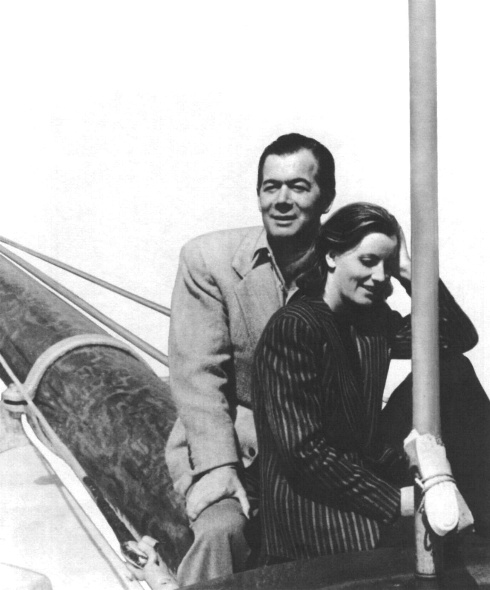
She also acquired a lot of male escorts during her retirement, most notable of which was her New York neighbour George Schlee. He managed to have some kind of control over Garbo, unlike most men in her life. Again there is speculation of a proposal, that was somewhat hindered by the fact Schlee was already married to Garbo's dress designer. This elaborate mengage a trois, remained ammicable until Schlee's death in 1964 (below shortly before his death). After which his wife Valentina and Garbo remained cold and bitter towards each other.
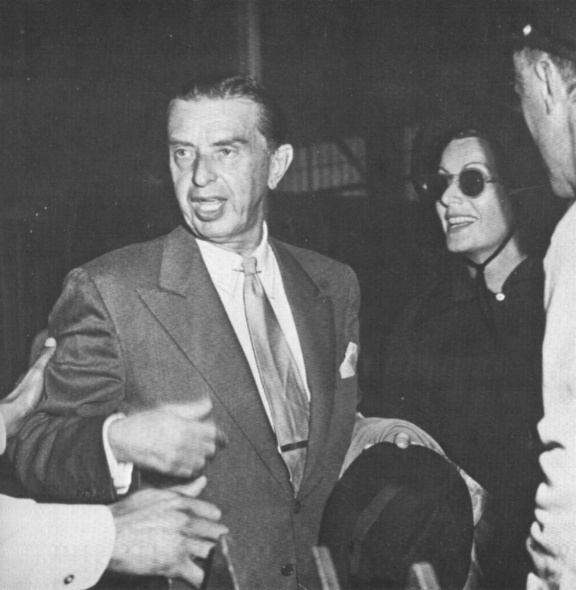
Garbo would in later life refer to her famous line "I want to be alone.", by saying "I never said, ‘I want to be alone,'. I only said, ‘I want to be left alone.' In all the world there is a difference.".
Due to Garbo's own reluctance to play the celebrity game, and open up her personal life to the public, her mystery and enigma has only grown over the years. It begs the question whether she would have been as rich, famous and popular as she was, if she had a less "aloof" personality. There are more contradictions than known facts of how Garbo spent the last fifty years of her life. There are equally just as many curious anecdotes of Garbo's life in Hollywood. In today's world of the modern celebrity, where the world is witness to every aspect of a celebrity's life through countless press interviews and social interaction with their audience with internet tools such as twitter, it seems unlikely that there will ever be another Greta Garbo.
Garbo died on the 15th of April 1990, she was 84 years old. The picture above was taken 4 days before she died, as she was being taken to hospital. Despite not having worked for 50 years, she died a wealthy woman, through wise property investment, as well as an impressive art collection including Picassos. She had always lived a life of frugality, and left a $32m estate to her neice Grey Reisfeld.
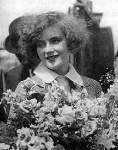
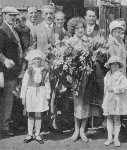
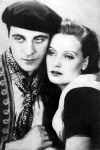



No comments:
Post a Comment